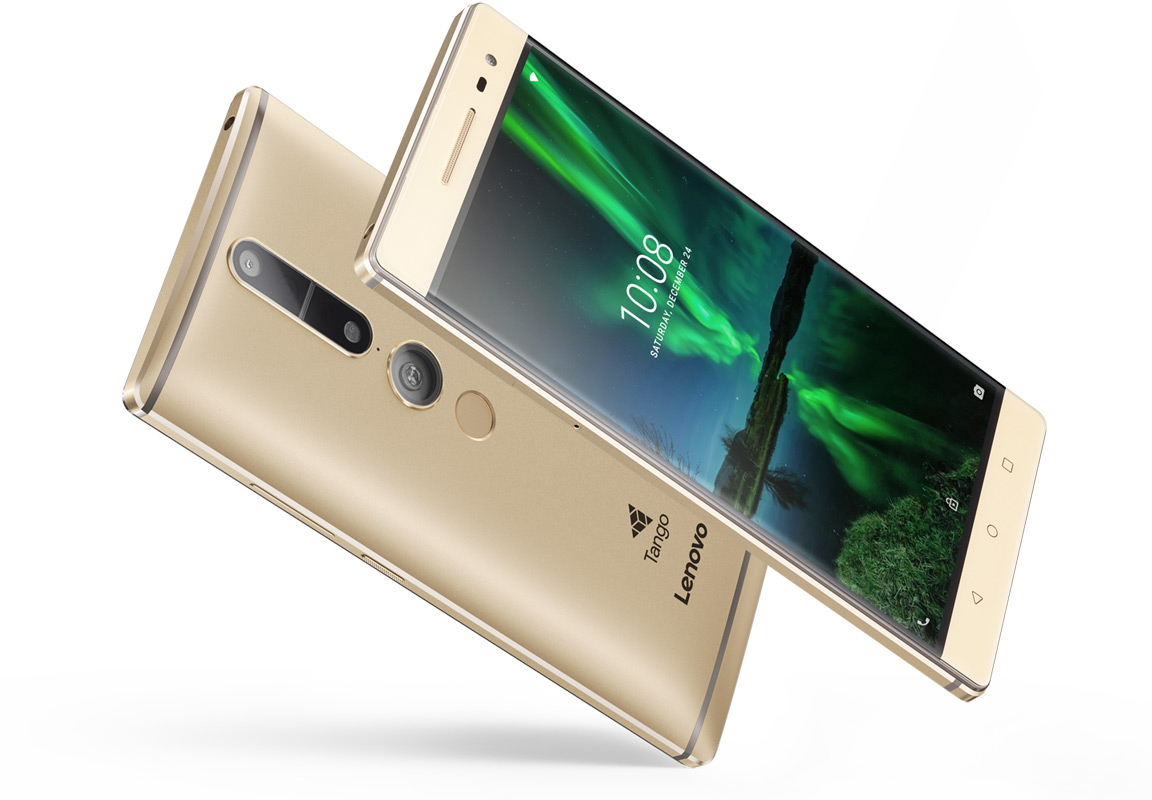Google Tango enters the virtual reality world
At last Google Tango enters the VR (and AR) world. I was waiting for it since months, maybe years. And finally today, on UploadVR I found that it was happening.
Ok, let me take a step back and clarify everything. What is Google Tango? Tango is an augmented reality platform that Google announced back in 2014. Long story short, it is a platform for Android tablets and smartphones that, using depth and color cameras from the device, lets you reconstruct completely the environment around you. It means that you can move your Tango device around and then have a complete reconstruction of your room in real time. This can be great for two possible kind of applications:
- Scanning and reconstruction of 3D models: you can move your tablet around a little statue to reconstruct the model of that statue and then use it in some virtual world you’re making;
- Augmented reality: the main field of application of Google Tango: once you have all your surrounding environment reconstructed, you can put virtual objects inside it and interact with them freely. If you’re thinking that’s the same thing that I’ve been talking about in my Hololens article… well, you’re right: it’s the same stuff.
Tango is super cool… look at this video about it and fall in love with it, as I did 2 years ago:
We didn’t buy a Tango device due to its high price and then Tango vanished from my radars.
Some times ago I met a guy that said that it used Tango for work (he makes 3D reconstruction of environments) and he said that he tried it and that it was really awesome. This made me think again about the Tango project. And this positive honest feedback made me think that so Tango was really well made and was not a mediocre prototype with lot of hype like Google Glass.
As a VR dev, my first thought about Tango was that it would be super-great to use it for virtual reality: Tango smartphones could give people positional tracking everywhere; and being able to map the surrounding environments, they could also give hints about how the environment is made and make the user avoid obstacles on his way. But this has never happened. In the meantime, Dacuda, Intel, Qualcomm, Oculus and Microsoft presented VR devices (or software, in the Dacuda case) with this kind of functionalities and I always wondered: why Google that is working on this project since 2 years has never done anything about it?
Finally today Google Tango has beginning entering the market. The first smartphone supporting Tango has been released, thanks to a partnership between Google and Lenovo: the Lenovo Phab 2 Pro will let you experience very cool things in augmented reality.
Since now we have a smartphone supporting Tango, we could use it with some mobile headset, like Google Cardboard and have inside-out positional tracking out of the box. That’s super cool! Google Tango team has suggested this and told UploadVR they’ve so solved the inside-out tracking problem.
So, finally Tango has made its first true appearence on the market. The price of the device starts from $499.99, far less than equivalent smartphones necessary for GearVR or Daydream platforms. And it can offer more advanced features… it would let you to use your headset for AR, too… so with a simple Cardboard you could have a good VR and AR headset. It could be a milestone moment for this new technologies.
But, there is still a big problem… the one that everyone of us is thinking about: yeah, the damn battery. And overheating. We do not want our smartphone to explode like a Note 7… or to see its battery to last for 10 minutes. And that’s why Tango engineers say that Tango technology can be optimal to make inside-out tracking on smartphones in 2-3 years. At this moment is something experimental only.
But let me be honest: it’s cool anyway.
(Header Image by Lenovo)
Disclaimer: this blog contains advertisement and affiliate links to sustain itself. If you click on an affiliate link, I'll be very happy because I'll earn a small commission on your purchase. You can find my boring full disclosure here.



